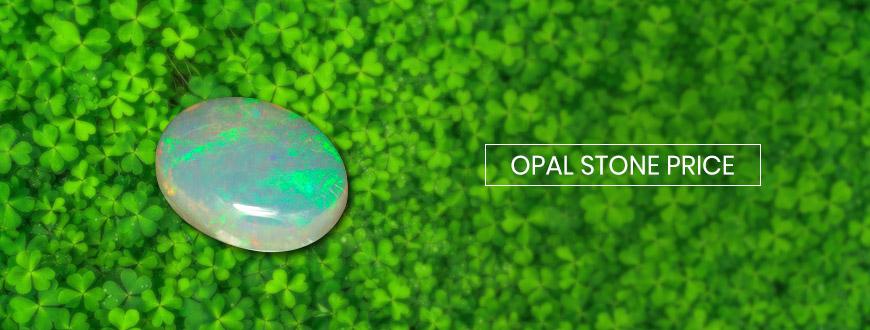Kalyan Wiki

Opal Stone Price
Opal is a mineraloid of Silica, in hydrated amorphous form, carried deep into underground rocks by the seasonal rains in semi-desert regions. When the dry periods arrive, the substantial deposits of Silica, left in the fissures of the subsurface rocks, get exposed. Precious classes of opals are distinguished from common types of Opals by the display of iridescence or by a play of colours in the former and the absence of the same in the latter. Common Opal displays a milky turbid sheen, due to opalescence.
The price of Opal is dependent on many factors, namely Opal class, Body tone, Play of colour and Brilliance, Colour bar and Faults. The class of Opal that fetches maximum price is the solid Opal, consisting of a complete piece of precious Opal polished into a stone. Its value decreases when it turns into Opal doublet or Opal triplet, both comprised of assembled stones, with a lesser proportion of Opal and a greater proportion of inexpensive materials.
The Body tone refers to the background colour of Opals. Black Opal is the most preferred one, as it has the best display of colours.
Opals with light, white or crystal body tones are also encountered. They are also categorised by the play of colour caused due to the interference and dispersion of visible light by the silica spheres in the internal structure of Opal.
Red fire Opal, Green Opal and Blue Opal are graded in order of decreasing value. When the stone is observed from above, it exhibits clarity and brightness of colours, referred to as the brilliance; ranging from brilliant or bright to subdued or dull. The play of colours of each Opal is attributed to the unique pattern of the Opal stone namely excellent patterns like Harlequin, chequerboard pattern, flagstone, random patterns, ribbons, having parallel lines of colours, straws, colours overlapped in narrow strips, Chinese Writing, Chinese characters produced in thin strips of overlapping colour, picture stones depicting images of people, landscapes etc. Good patterns include floral, displaying a broad spread of colours, the Rolling Flash, in which the larger sections of colour are rolled in stone, Broad Flash, in which large sections of colour are flashed in stone and Pinfire, displaying specks of colour. Poor patterns are indistinct featuring patterns of Moss and Grass.
The colour band of Opal varies in each stone according to its size and shape. When faults are present in Opal, it will considerably reduce the value of Opal and Crack Crazing. Poachlines and Webbing are some of the common defects encountered. The experience of a valuer helps a great deal in deciding the value of Opal easily and accurately, irrespective of all these.







